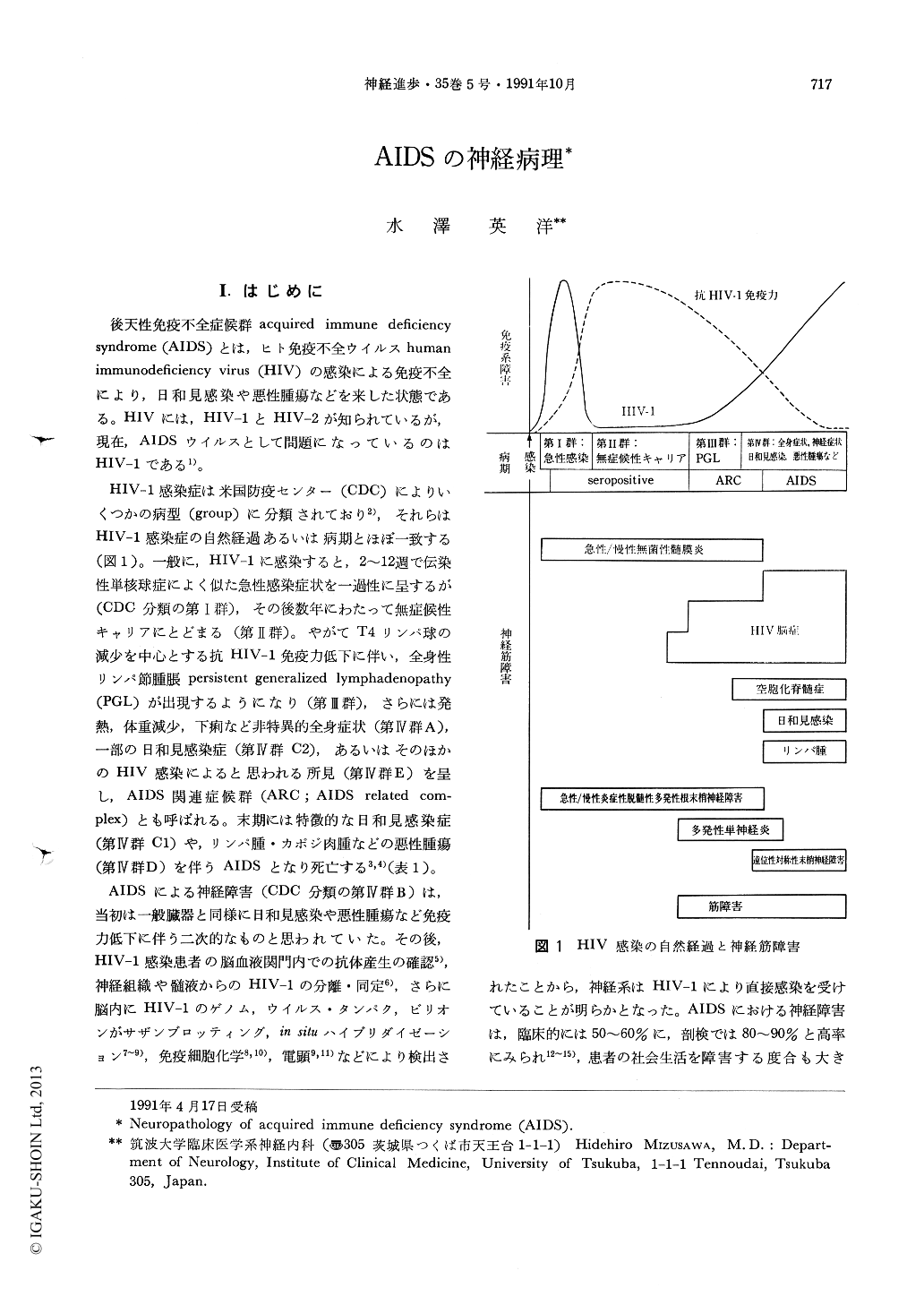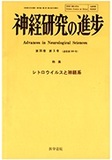Japanese
English
- 有料閲覧
- Abstract 文献概要
- 1ページ目 Look Inside
I.はじめに
後天性免疫不全症候群acquired immune deficiency syndrome(AIDS)とは,ヒト免疫不全ウイルスhuman immunodcficiency virus(HIV)の感染による免疫不全により,日和見感染や悪性腫瘍などを来した状態である。HIVには,HIV-1とHIV-2が知られているが,現在,AIDSウイルスとして問題になっているのはHIV-1である1)。
HIV-1感染症は米国防疫センター(CDC)によりいくつかの病型(group)に分類されており2),それらはHIV-1感染症の自然経過あるいは病期とほぼ一致する(図1)。一般に,HIV-1に感染すると,2~12週で伝染性単核球症によく似た急性感染症状を一過性に呈するが(CDC分類の第1群),その後数年にわたって無症候性キャリアにとどまる(第Ⅱ群)。やがてT4リンパ球の減少を中心とする抗HIV-1免疫力低下に伴い,全身性リンパ節腫脹persistent generalized lymphadenopathy(PGL)が出現するようになり(第III群),さらには発熱,体重減少,下痢など非特異的全身症状(第IV群A),一部の日和見感染症(第IV群C2),あるいはそのほかのHIV感染によると思われる所見(第IV群E)を呈し,AIDS関連症候群(ARC;AIDS related complex)とも呼ばれる。
The nervous system is frequently and profoundly affected by human immunodeficiency virus (HIV). Nervous system involvement is responsible for clinical manifestations in 50-60% of AIDS patients and found at autopsy in 80~90% of patients with AIDS. Certain neurologic complications such as aseptic meningitis and peripheral neuropathy may occur in earlier stages of HIV infection. HIV can directly infect the brain, producing dementia (HIV encephalopathy, AIDS dementia complex or multinucleated giant cell encephalitis), aseptic meningitis and vacuolar myelopathy. It may also cause distal symmetric peripheral neuropahy, multiple mononeuropathy or inflammatory demyelinating polyradiculoneuropathy and myopathy. HIV encephalopathy is characterized by pallor of the white matter, astrogliosis and cell infiltration with macrophages, lymphocytes and multinucleated giant cells which are probably produced by the fusion of mononuclear macrophages. The white matter is diffusely affected with scattered areas which are more profoundly damaged. Those areas and cell infiltration are frequently associated with blood vessels. In addition to the white matter, the central grey matter and less prominently the cerebral cortex are involved in HIV infection. HIV antigens, genomes, and virions are found usually in macrophage, microglia and multinucleated giant cells. HIV infection of astrocytes is occasionally reported but neuronal or oligodendroglial infection with HIV is still controversial. Although the pathomechanism of HIV encephalopathy remain unclear, HIV envelope protein: gp 120 and macrophages/microglia infected with HIV may play important roles.

Copyright © 1991, Igaku-Shoin Ltd. All rights reserved.


